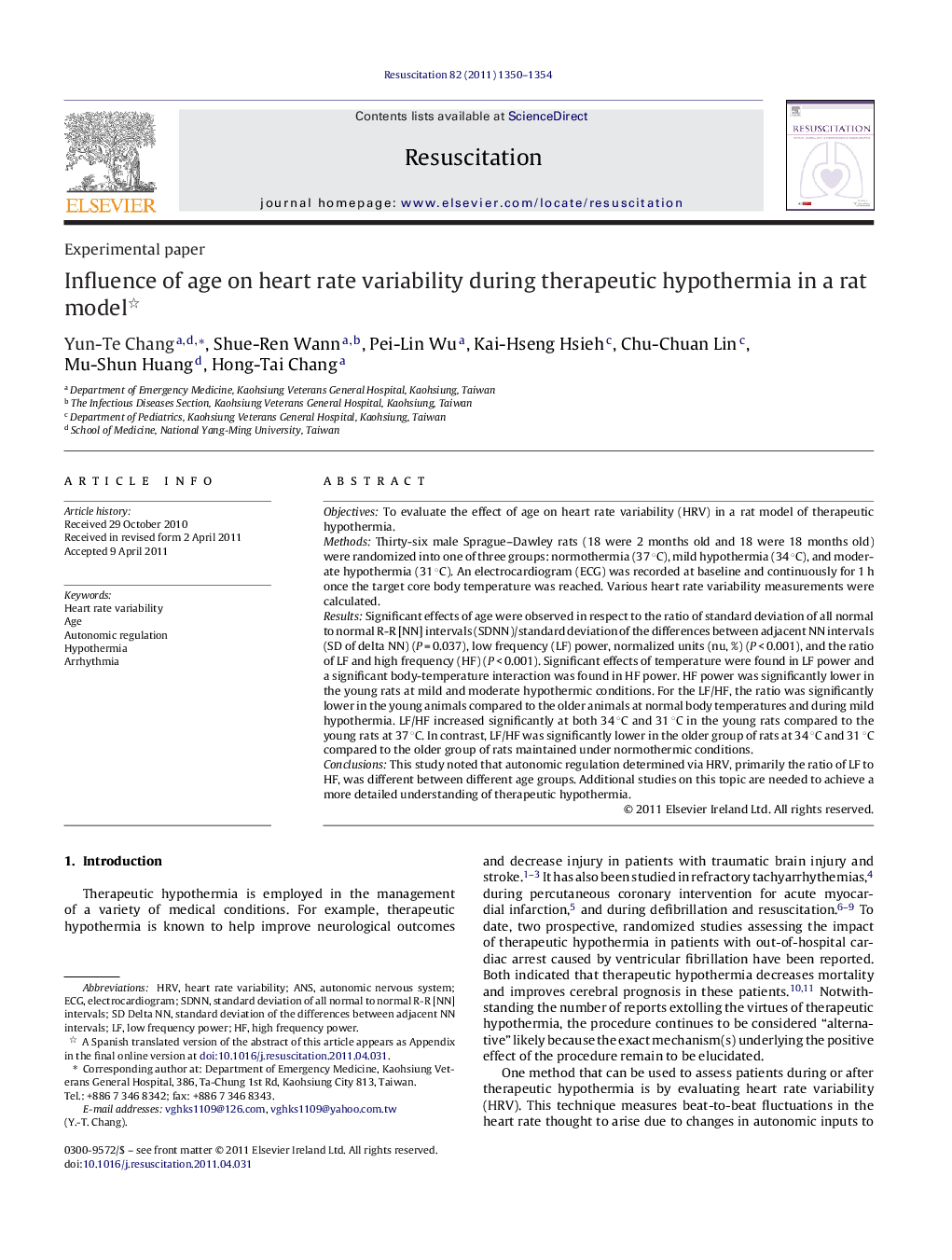| Article ID | Journal | Published Year | Pages | File Type |
|---|---|---|---|---|
| 3009351 | Resuscitation | 2011 | 5 Pages |
ObjectivesTo evaluate the effect of age on heart rate variability (HRV) in a rat model of therapeutic hypothermia.MethodsThirty-six male Sprague–Dawley rats (18 were 2 months old and 18 were 18 months old) were randomized into one of three groups: normothermia (37 °C), mild hypothermia (34 °C), and moderate hypothermia (31 °C). An electrocardiogram (ECG) was recorded at baseline and continuously for 1 h once the target core body temperature was reached. Various heart rate variability measurements were calculated.ResultsSignificant effects of age were observed in respect to the ratio of standard deviation of all normal to normal R-R [NN] intervals (SDNN)/standard deviation of the differences between adjacent NN intervals (SD of delta NN) (P = 0.037), low frequency (LF) power, normalized units (nu, %) (P < 0.001), and the ratio of LF and high frequency (HF) (P < 0.001). Significant effects of temperature were found in LF power and a significant body-temperature interaction was found in HF power. HF power was significantly lower in the young rats at mild and moderate hypothermic conditions. For the LF/HF, the ratio was significantly lower in the young animals compared to the older animals at normal body temperatures and during mild hypothermia. LF/HF increased significantly at both 34 °C and 31 °C in the young rats compared to the young rats at 37 °C. In contrast, LF/HF was significantly lower in the older group of rats at 34 °C and 31 °C compared to the older group of rats maintained under normothermic conditions.ConclusionsThis study noted that autonomic regulation determined via HRV, primarily the ratio of LF to HF, was different between different age groups. Additional studies on this topic are needed to achieve a more detailed understanding of therapeutic hypothermia.
